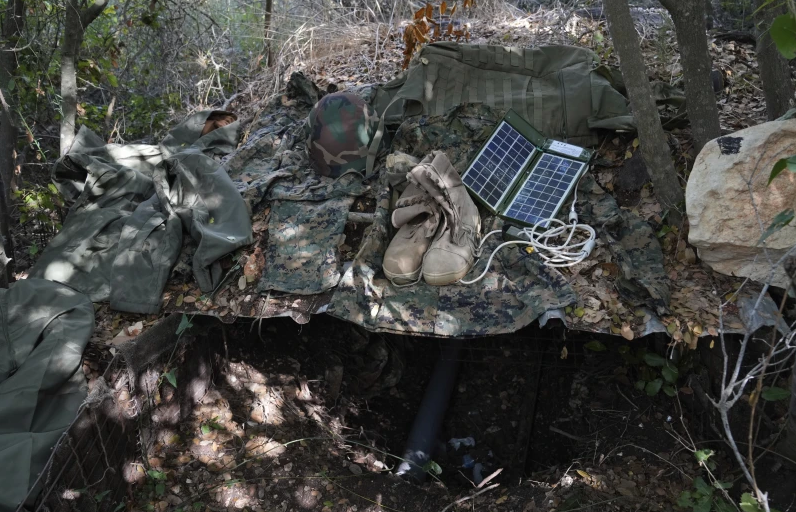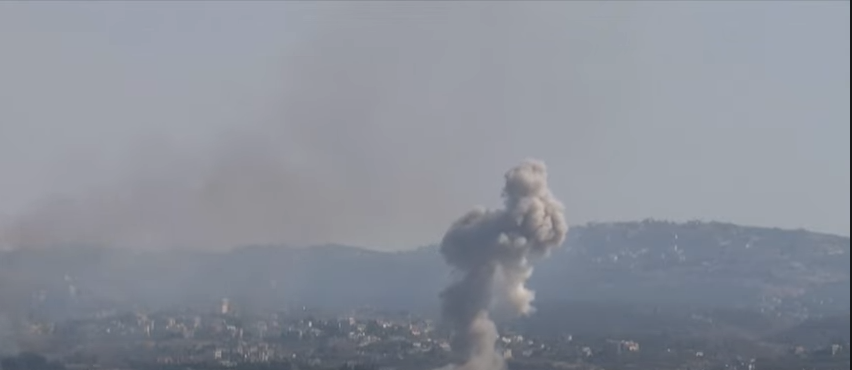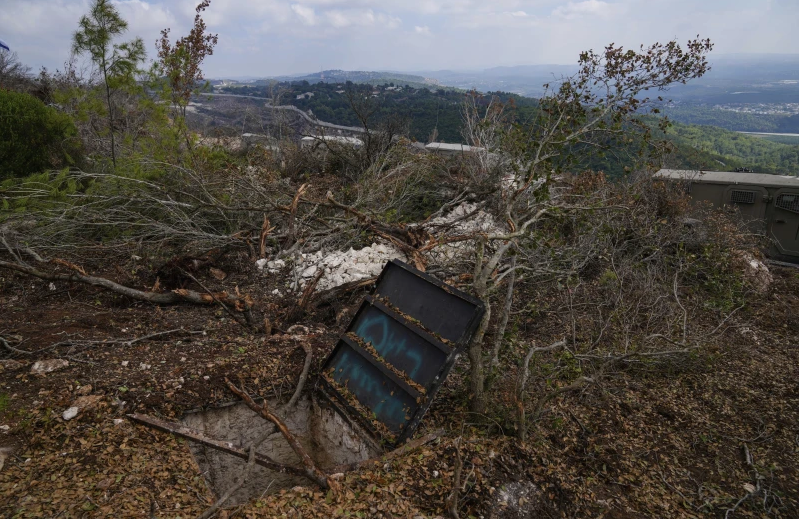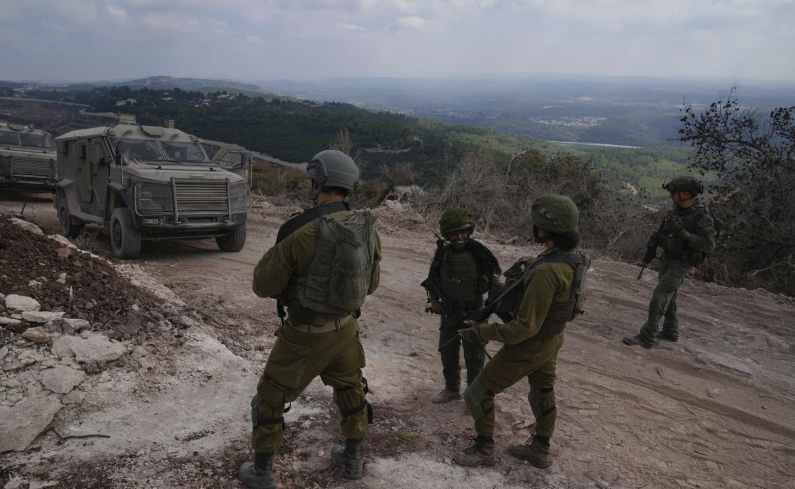Israeli forces have spent most of their last year targeting the Hamas network in Gaza. Now their focus is on eliminating the tunnels and other hideouts of Hezbollah militants in southern Lebanon.
Frightened by Hamas’ deadly raid on Israel last year, which sparked the war in Gaza, Israel says its mission is to prevent an attack from landing on its northern border.
The Israeli army has been combing the dense underbrush of southern Lebanon for the past two weeks, This has exposed the deep strike capabilities of Hezbollah, which is characterized by a tunnel system equipped with weapons caches and rocket launchers that Israel says pose a direct threat to nearby populations.
Israel’s war against Iran has spread into Lebanon, and according to the National Health Commission, more than 1,700 people have been killed in recent weeks, about a quarter of whom were women and children.
Hezbollah has deep ties to southern Lebanon
Hezbollah, which has called for the destruction of Israel, is the most important paramilitary force in the Arab world. It started firing rockets at Israel a day after the Hamas attack. After nearly a year of fighting with Hezbollah, Israel launched its ground
offensive on southern Lebanon on October 1 and has since sent thousands of troops into the rugged terrain.
Even as it builds up its forces, Israel says its offensive consists of “limited, localized and targeted ground raids” aimed at destroying Hezbollah’s infrastructure and displacing tens of thousands. Israelis can return to their homes. The fighting has also uprooted more than a million Lebanese in the past month.
Many South Lebanese residents support the group and benefit from its social outreach. Although most fled the area months ago, they largely see the heavily armed Hezbollah as their protectors, especially since the US-backed Lebanese Army has the power to protect them from any Israeli intervention. There are no suitable weapons for protect them from any Israeli incursion.
That widespread support has allowed Hezbollah to establish “a military structure for itself” inside the villages, said Eva J. Kolriotis, a political analyst specializing in Middle East and Islamic militant groups. The Israeli army says it has found weapons inside houses and buildings in the villages.
Hezbollah built a network of tunnels in multiple areas of Lebanon
Israel’s air power has outstripped Hezbollah’s defenses, with the militant group turning to underground tunnels to evade Israeli drones and jets. Experts say that Hezbollah’s tunnels are not limited to the south.
“It’s a land of tunnels,” said Talbari, who studies Hezbollah as director of research at The Alma Research and Education Center, a think tank focused on northern Israel’s security.
Kolriotis said the tunnels extend beneath Beirut’s southern suburbs, where Hezbollah’s command and control is located and where it stores strategic missiles. The group also maintains tunnels along the border with Syria, which it uses to smuggle weapons and other goods from Iran into Lebanon, she said.
Kolrioutis said southern Lebanon is where Hezbollah maintains tunnels to store missiles — and from where it can launch them. Some of the more than 50 Israelis killed by Hezbollah over the past year have been hit by anti-tank missiles.

Unlike the tunnels dug by Hamas in the sandy coastal strip of Gaza, Hezbollah’s tunnels in southern Lebanon were carved into solid rock, a feat that required time, money, machinery, and skill.
Using advanced intelligence, Israel discovered “hundreds and hundreds and hundreds” of underground positions, many of which could hold up to ten fighters and were stocked with rations, an Israeli military official said. The official, who spoke on condition of anonymity in accordance with military rules, said troops were blowing up tunnels found or using cement to render them unusable.
The Israeli military said on Saturday that troops had found and destroyed more than 50 tunnels in southern Lebanon, but did not say over what period.

The group used the tunnels during the 2006 Israel-Hezbollah month-long war, but the network has since been expanded, even as a UN cease-fire resolution allowed Lebanese and UN forces to withdraw. Forced to keep Hezbollah fighters out of the south.
In mid-August, Hezbollah released a video showing what it described as a cavernous underground tunnel large enough to pass through trucks loaded with missiles. Hezbollah operatives were also seen riding motorcycles inside the illuminated tunnel, named Imad 4 after the group’s late military commander Imad Mughniyah, who was killed in a 2008 bombing in Syria over Israel.
Hezbollah’s tunnels could be hindering Israel’s mission
Israeli troops are advancing into southern Lebanon using tanks and engineering equipment, and air and ground forces have hit thousands of targets in the area since the start of the offensive.
The military recently said it had found a tunnel across the border that extended only a few meters into Israel but had no opening. Israel also uncovered a tunnel shaft located about 100 meters (yards) from the UN peacekeeping post, although it was unclear what the exact purpose of the tunnel was.
Israel says the tunnels store supplies and weapons and are equipped with lighting, ventilation and sometimes plumbing, indicating they could be used for extended stays. It says it has arrested several Hezbollah fighters hiding inside, including three on Tuesday who it said were found armed. The Israeli military official said many Hezbollah fighters appeared to have left the area.
A Lebanese military expert, Naji Malaib, a retired brigadier general, said he assessed that Hezbollah’s tunnels were preventing Israel from making major gains. He compared the success to the Gaza war, where Hamas has used its tunnels to thwart Israeli forces and carry out insurgency-like attacks.
Israeli officials insist that the mission in Lebanon is succeeding. It says it has killed hundreds of Hezbollah fighters since the ground operation began in Lebanon, although at least 15 Israeli soldiers have been killed in the process.
Israel has faced Hezbollah tunnels before. In 2018, Israel launched an operation to destroy attack tunnels that penetrated Israeli territory. Barry said six tunnels were discovered, one of which was 1 kilometer (1,000 yards) long and 80 meters (87 yards) deep, crossing about 50 meters (yards) into Israel.
Israel believes Hezbollah was planning an Oct. 7-style invasion
For Israel, the tunnels are evidence that Hezbollah planned what Israel says will be a bloody attack against communities in the north.
“Hezbollah has publicly announced that it intends to carry out its massacres, on an even larger scale, on Israel’s northern border on October 7,” Israeli military spokesman Rair. Admiral Daniel Hagari said that the day the troops entered Lebanon.
Israel has not released evidence that such an attack is imminent but has expressed fears that an attack could occur after residents return.
Former Hezbollah leader Hassan Nasrallah, who was killed by Israel in an underground bunker last month, has hinted in speeches that Hezbollah could attack northern Israel.
In May 2023, a few months before the Hamas attack, Hezbollah staged a simulated incursion into northern Israel in which militants on motorcycles tore down a border fence decorated with Israeli flags.
Hezbollah officials have sometimes framed calls for an attack against Israel as a defensive measure that would be taken in times of war.


